Terms like gourmet, delectable and healthful converge in the healthy indulgences category, where consumer demand is growing and product makers are innovating. To stay on top of this market, take heed of these trends and marketing perspectives.
Tasty Trends and Foodie Fads
One trend is that companies are coming up with ever more creative ways of packaging their products to satisfy the consumer demand for portion control and convenience. Drew Harrington, co-founder of Yasso Frozen Greek Yogurt, Boston, MA tells us that during the development and launch of his brand back in 2011, these types of decisions were crucial. “Consumers were definitely looking both for convenience and portability, and they love that there’s no risk of over-indulgence with a pre-portioned item,” he says.
Delivering in this regard can be a distinguishing factor for a 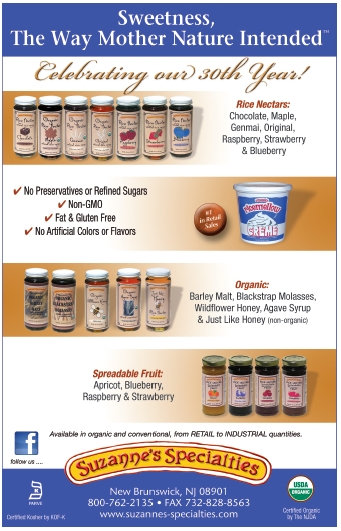 brand. “As a product that is found next to pints of ice cream and full-fat treats, it is something that has helped make our healthy treats stand out in the aisle, so the trend of pre-portioned snacks has helped differentiate us from the clutter,” Harrington says.
brand. “As a product that is found next to pints of ice cream and full-fat treats, it is something that has helped make our healthy treats stand out in the aisle, so the trend of pre-portioned snacks has helped differentiate us from the clutter,” Harrington says.
Brad Gruno, founder and CEO of Brad’s Raw Foods, Pipersville, PA, says his company’s raw crunchy kale products are available in single-serving “minis” to cater to this trend. “Individually packaged and serving size-controlled products are definitely great for grab-and-go snacking,” Gruno says. His company’s single-serving product is often displayed on or near salad bars at retail because of this grab-and-go aspect, which allows consumers to avoid the risk of eating an entire, regular-sized 2.5-oz box of kale (though he says this would not be such a bad thing).
Other consumer demands have product makers at work in the kitchen. “A growing trend in the indulgent food space is to pair familiar ingredients and flavors in new ways to satisfy the consumers’ desire to experience the foods they eat, not just consume them,” says Whitney Bembenick, R&D manager for Endangered Species Chocolate, Indianapolis, IN. To illustrate, she references her company’s natural crème-filled chocolate bar line, which couples unique flavors with dark chocolate and dairy-free crème filling, while meeting the company’s ethical and sustainable sourcing standards.
The desire for a hands-on food experience is another trend worth noticing. “I think starting with healthy ingredients, such as yogurt and kefir, and using a do-it-yourself approach to healthy indulgence to prevent massive amounts of sugar or avoid over-processed foods, is emerging as a growing trend that is really resonating with more and more consumers,” says Jennifer Bice, owner of Redwood Hill Farm and Green Valley Organics Lactose Free, Sebastopol, CA.
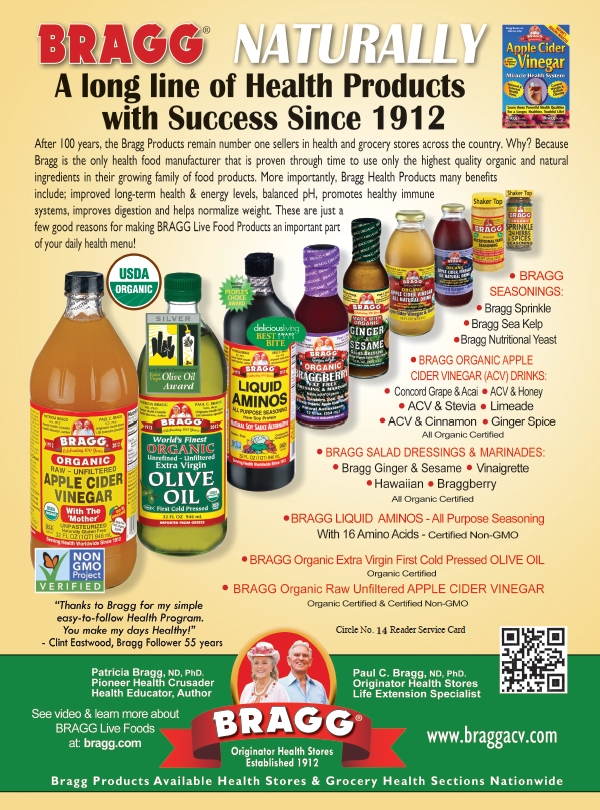 For Bice and her company, this DIY ethic among foodies has led to marketing opportunities, like developing a mix-and-match smoothie chart for customers to use that recommends the company’s products as base ingredients. Another example, she says, is their work with food bloggers to develop recipes and serving suggestions. This has led to intriguing results, she adds, like recipes for Cranberry Oatmeal Yogurt Bars and Matcha Green Tea Frozen Yogurt. By encouraging natural food consumers to seek out their own healthy ingredients, one can help them avoid overly packaged, processed foods while enjoying something both indulgent and healthy.
For Bice and her company, this DIY ethic among foodies has led to marketing opportunities, like developing a mix-and-match smoothie chart for customers to use that recommends the company’s products as base ingredients. Another example, she says, is their work with food bloggers to develop recipes and serving suggestions. This has led to intriguing results, she adds, like recipes for Cranberry Oatmeal Yogurt Bars and Matcha Green Tea Frozen Yogurt. By encouraging natural food consumers to seek out their own healthy ingredients, one can help them avoid overly packaged, processed foods while enjoying something both indulgent and healthy.
Trends tend to come and go, says Zina Minz, president and founder of La Vita Health Foods, Ltd., Suffern, NY, maker of health-conscious baked goods. But consumer awareness about healthier food options is growing consistently. She feels that the gluten-free diet falls under this umbrella, and that those who choose to follow it still want the pleasure of indulgent treats.
But in another respect, Minz argues that gluten free is not really a trend at all. “Gluten-free, delicious products are the future. It is not a trend because a gluten-free diet is the only choice for so many people,” she says. Those that must eat gluten free to remain healthy, namely the gluten intolerant, also want to indulge. With gluten-free cookies and brownies made in a gluten-free certified facility, Minz says her company is serving this need and strives to use top-quality ingredients in doing so.
Looking to the short-term future, Harrington predicts more companies will bring healthy “on-the-go” products to market in 2014.
Harrington says consumers seek brands like 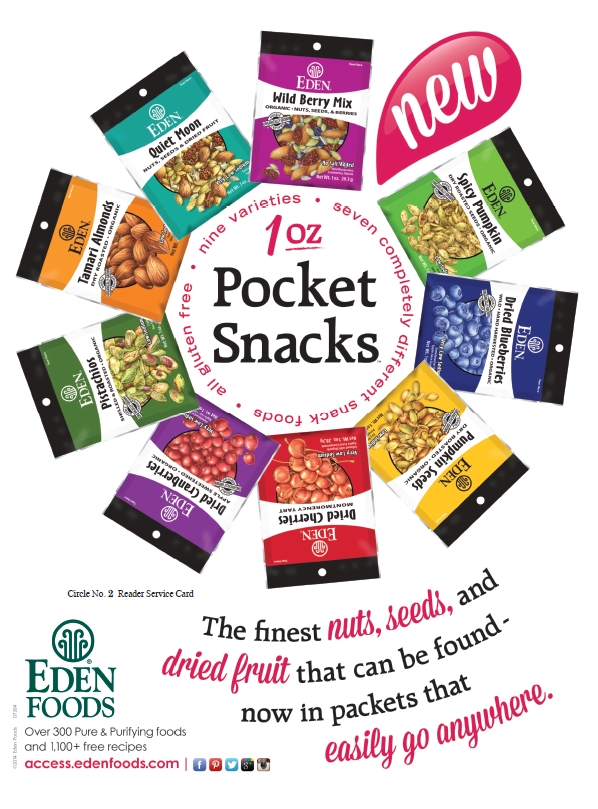 his out for taste and for natural ingredients, but there are other elements that attract people. “We’ve found that the diversity of our flavor offerings are also a key element of growing our fan base,” he says, adding that demand for traditional ice cream flavors guided new product launches for the brand in 2014. These now complement previous fruit flavors and share traits like real Greek yogurt, low calories and fat content, high protein content and no artificial sweeteners. Harrington says that consumers have responded well to this authentic ingredient list.
his out for taste and for natural ingredients, but there are other elements that attract people. “We’ve found that the diversity of our flavor offerings are also a key element of growing our fan base,” he says, adding that demand for traditional ice cream flavors guided new product launches for the brand in 2014. These now complement previous fruit flavors and share traits like real Greek yogurt, low calories and fat content, high protein content and no artificial sweeteners. Harrington says that consumers have responded well to this authentic ingredient list.
The entire landscape of snacking is shifting, according to Gruno. “It used to be that people associated ‘convenient’ foods and snacks with being unhealthy, and that’s something that has really changed. More and more products that are easy and good for you keep popping up, and consumers are definitely responding to this trend,” he says.
Marketing Indulgent, Yet Healthy Foods
Many consumers must be shown how today’s options are healthy alternatives to yesterday’s guilty pleasures. Others may see “healthy” as a red flag meaning “doesn’t taste as good. ”Bembenick offers her company’s perspective on how to forge ahead with this conundrum. As a healthy alternative to other confections, she says her company promotes its chocolate bars through marketing and spreading the word about the benefits of dark chocolate. Such benefits have been recognized by popular figures like Dr. Oz.
She believes the most powerful tool, however, is something even more within a brand’s control: the label. “Certifications, nutritional labels and ingredient statements are the most important part of marketing a product as ‘healthy.’ Consumers of today are taking a closer look at these things before products make it to their 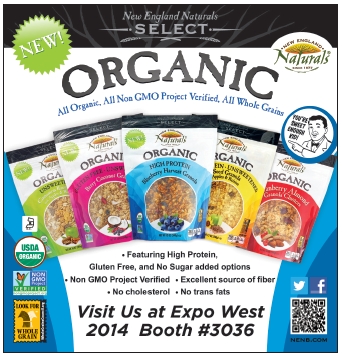 grocery cart,” Bembenick says.
grocery cart,” Bembenick says.
Packaging and marketing are the places to start, Gruno agrees, and he focuses especially on certifications. “Our certifications are incredibly important to us, and we make sure to prominently highlight them on our packaging. The non-GMO, organic, kosher, gluten free and vegan ‘stamps’ are one of the first things that most customers notice about our products,” he says. Some of these certifications are important to people with dietary restrictions or preferences, he adds. Because people lack the time to examine every product in the store, products that make the shopping experience easier by making sure certifications jump off the label are more likely to be purchased, he believes.
Aesthetic aspects are also part of getting the point across. “Nice packaging is very important. This is the first thing that attracts the consumer. The pictures of the product should reflect what is inside and should look appealing,” says Minz.
Unfortunately, however, some people will be hard to sway away 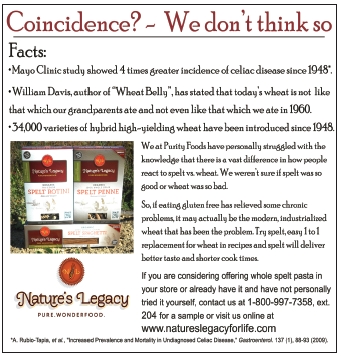 from the healthy foods vs. great taste dichotomy. To combat this, placement can be key. “Gluten-free products should be placed in mainstream aisles as well as specialty food aisles. If the product tastes great, the whole family can enjoy it without guilt and the possibility of cross contamination,” Minz says. She believes healthier options that taste particularly great should be promoted, as this is the main way consumers will start associating healthy choices with positive taste experiences.
from the healthy foods vs. great taste dichotomy. To combat this, placement can be key. “Gluten-free products should be placed in mainstream aisles as well as specialty food aisles. If the product tastes great, the whole family can enjoy it without guilt and the possibility of cross contamination,” Minz says. She believes healthier options that taste particularly great should be promoted, as this is the main way consumers will start associating healthy choices with positive taste experiences.
“Getting consumers to try new products is a challenge for any company. We are always striving to communicate our attributes effectively. We look like an ice cream product, and are in an aisle with full-fat ice cream offerings, and people who are trying to eat healthy tend to shy away from this aisle altogether,” says Harrington. To reach out to its target consumer, he says that attributes like the use of all-natural ingredients and real Greek yogurt are highlighted clearly on packaging. Other strategies have included in-store tastings, working closely with retail partners to properly merchandise the products and encouraging consumers to give the products a trial by passing savings on to them, Harrington says.
Consumers are actively reading labels more closely these days, he explains, and are seeking out products that they can feel comfortable with eating every day. Harrington believes this shift benefits brands that use quality ingredients. WF
Published in WholeFoods Magazine, February 2014









